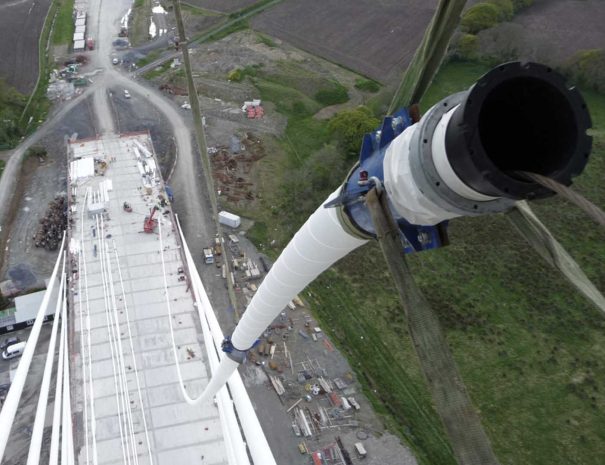DMK Cable Stay
Products
DMK Cable stay
The progress of cable-stayed bridges has been due to the need to build longer spans in a more economical way and the concept of visual landmark that this type of bridge brings to infrastructure networks. This progress goes hand in hand with the constant development of structural analysis, since the revival of the cable-stayed typology in 1955.
Our contribution
MK4 has been involved since its creation with the design and installation of cable stays for bridges and all kind of diverse stayed structures. Our staff, with more than 25 years experience in cable stays, together with DMK Stay have developed the DMK parallel strand stay system that fulfills the most demanding project requirements.
DMK Stay
The DMK Stay belongs to the latest parallel strand cable stay generation. Stay is based on a bundle of self protected restressing strands that run inside a global polyethylene duct. Strands are anchored through the wedge system in the DMK anchor heads.
The following premises have been taken into consideration for the DKM Stay design:
-
Stay behaviour according to the
most relevant international recommendations. - Durability.
- Wide size range.
- Easiness of installation.
- Unitary stressing (strand by strand).
- Adjustable anchorages for full stay stressing or distressing.
- Force checking or monitoring at any time.
- Replacement of the stay, as a whole or each strand individually.
- Prepared for damper installation.
- Adaptable for special solutions
Test
Stay anchor heads have been tested according to the FIB (Federation International du Beton) and PTI (Post-tensioning Institute) Recommendations for Stay Cable. . Design, Testing and installation and have achieved the following successfully:
They are linked to the structure only by the support of the anchor nuts on the distribution plates of the structure, the neoprene centralizers at the outlet of the guide tubes and on the shock absorber clamp, in case that option is used.
This configuration allows all the components of the stay to be dismantled without modifying the existing structure. In addition, the cables can be removed or replaced one by one if necessary.
































